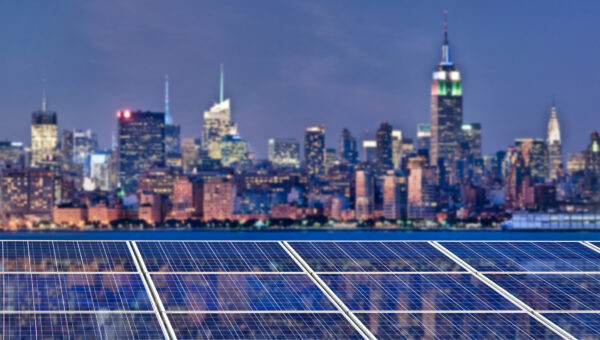
Breaking the Green Ceiling: New York Passes the Most Ambitious Climate Law in the Nation
Written by Rich Kassel, Executive Vice President, Capalino, and Leader of the Energy, Environment + Sustainability Group
In the wee hours of Thursday morning, the New York State Assembly voted to send the Climate Leadership and Community Protection Act (S. 6599/Kaminsky; A.8429/Englebright), passed earlier in the week by the State Senate, to Governor Andrew M. Cuomo for his signature.
Once enacted, the groundbreaking new law will codify the nation’s most ambitious plan to cut greenhouse gas emissions and further accelerate the State’s transition to cleaner sources of energy.
The Act will accomplish its ambitious climate goals in two ground-breaking steps. First, the Act requires the state to cut its greenhouse gas emissions by 85 percent by 2050, from a 1990 baseline. Second, it requires the state to use various strategies to offset the remaining 15 percent, which will bring the state to “net-zero” emissions by 2050.
A key component of the bill requires New York to get 70 percent of its electric power from wind, solar, or other renewable energy sources by 2030. This codifies the policy commitment that the Governor made in January, and will help ensure that future Governors do not stray from the Cuomo’s administration’s path. Embedded in this 70 percent commitment is a codification of the Governor’s commitment to install 9,000 megawatts of offshore wind capacity by 2035, 6,000 megawatts of distributed solar energy capacity by 2025, and 3,000 megawatts of energy storage capacity by 2030.
What does this mean for New Yorkers interested in the transition to a cleaner economy?
For starters, the new law should create great opportunities for businesses that want to invest in renewable energy, sustainable transportation, and more energy-efficient buildings and industry. New supply chains and technologies will emerge to enable and support these new areas of growth. Already, the State’s commitment to offshore wind is creating proposals to develop new ports to build the foundations, create the components, and assemble the wind turbines that will brought to the offshore wind farms. Proposals to scale up energy storage are emerging, including projects that will store wind power generated at night for use during daytime peak hours, thereby reducing the need for dirty, so-called “peaker plants.”
The Act also ensures at least 35 percent of the state’s investments in future clean energy and energy efficiency funds will be invested in low-income communities and communities of color that have historically borne a disproportionate share of the State’s pollution. These communities are increasingly on the front lines of rising sea levels, increasing flooding, and other climate impacts. While there are many details to be worked out related to this funding, this should eventually result in hundreds of millions of dollars invested in economically disadvantaged areas around the state.
One last point that was not raised in the Albany debate will become more clear as time goes on: The State’s climate law will make implementing the City’s recently-passed Local Law 97 (the Climate Mobilization Act) more likely to succeed. Local Law 97 will require the City’s large buildings to hit aggressive carbon reduction targets, starting in 2024. As more renewable energy comes into the City over the coming decade, it should become more cost-effective for these buildings to hit their carbon targets.
By enacting the Climate Leadership and Community Protection Act, New York will soon be home to the most ambitious climate law in the nation. While there will undoubtedly be implementation hurdles ahead, the State is now sending a clear signal to business, labor, investors, environmental advocates, and communities: if you want to be part of defining and implementing the nation’s clean energy future, New York is the place to be.
Capalino works with clients to implement low emission,
sustainable business strategies, and facilitate the adoption of innovative building, energy, resiliency, solid waste, transportation, and water technologies, products, and projects. To learn more, contact Rich Kassel at rkassel@nullcapalino.com or 212.616.5822.
Energy, Environment + Sustainability Services
Get The Latest From Capalino! Sign up for our free weekly newsletter for a roundup of top news and appointments from New York City and State government straight to your inbox every Friday. Click here to subscribe to Affairs+Appointments.



